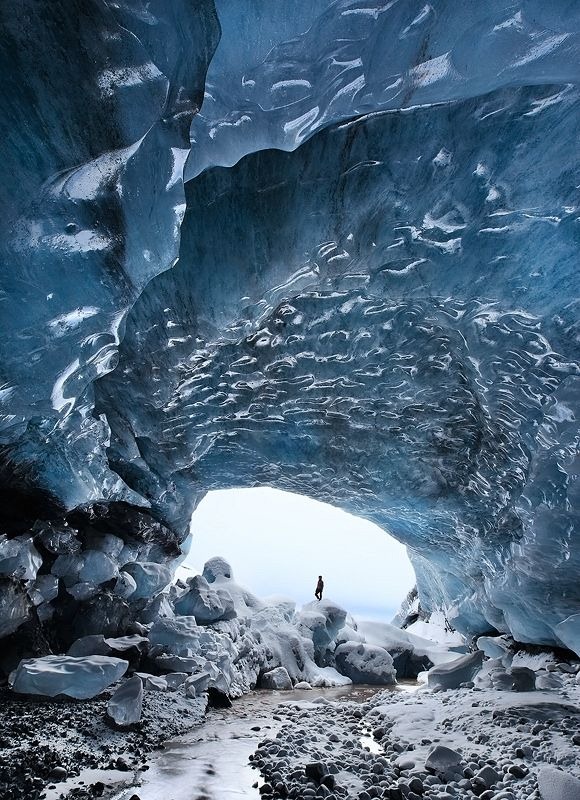
Photo: Ice cave is Skaftafell, Iceland by Orvar Thorgeirsson
Glaciers also move by "sliding" over the underlying bedrock.
This process is often aided by meltwater, which lubricates the
base of the glacier and facilitates sliding.
Meltwater can get to the base of the glacier by melting on the surface and moving through
interconnected channels within the glacier, called englacial conduits,
and then exiting the glacier.
Meltwater is also produced due to the pressure of the overlying ice, which lowers the
melting point of ice at the base of the glacier. This means that water can exist
underneath a glacier at temperatures below 0°C.
As glaciers worldwide continue to lose mass by melting, this lubricates the bottom
of the glacier and creates a positive feedback loop where more melting leads to more
sliding and even more melting...
As man-made climate change increases the average global temperature, the ice sheets
on Antarctica and Greenland will become increasingly more unstable.
If both ice sheets were to melt, this would raise the global sea level by over 70 meters.
1. What is a glacier?
2. Stress and Strain
3. How do glaciers flow?
4. Basal Sliding
Bibliography